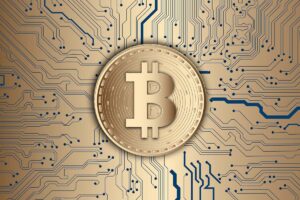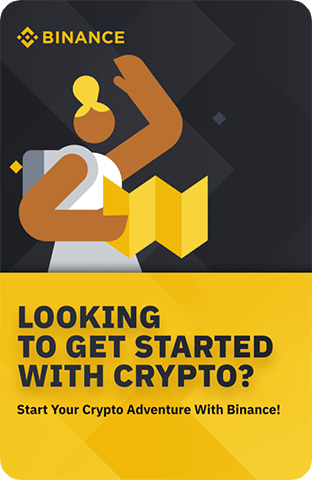A new financial system called decentralized finance (DeFi) is based on safe distributed ledgers that are similar to those used by cryptocurrencies. By allowing people, merchants, and companies to execute financial transactions through this developing technology, it challenges traditional, centralized banking and financial institutions. DeFi removes the usage fees that banks and other financial institutions impose while giving customers more control over their money.
In a Nutshell
- DeFi (decentralized finance) is a new financial technology that poses a threat to the current centralized banking system.
- DeFi does away with the usage fees that banks and other financial institutions impose.
- To manage transactions, DeFi makes use of the same blockchain technology as cryptocurrencies and so called dApps.
Through personal wallets and trade services, DeFi allows customers more control over their finances. - DeFi can not completely guarantee anonymity because the entities with access can track transactions.
Centralized vs. Decentralized Finance (DeFi)
Decentralized finance differs from traditional, centralized banking and financial institutions.
Centralized Finance
In centralized finance, banks and other third parties hold people’s money and help them move it from one person to another. Each of these third parties charges a fee for their services. A credit card charge goes from the merchant to an acquiring bank, which sends the card information to the credit card network.
“DeFi is what happens when you combine the power of crypto with the openness of the internet.”
Nick Szabo
The network clears the charge and requests payment from the bank. Each entity in the chain receives a payment for its services, usually because merchants must pay for the use of credit and debit cards.All financial transactions are monitored in centralized finance, from loan applications to the services of a local bank.
Two of DeFi’s objectives are to reduce transaction time and increase access to financial services.
Decentralized Financing
Decentralized finance cuts out the middleman by enabling individuals, merchants, and businesses to conduct financial transactions through emerging technology. Through peer to peer financial networks, DeFi uses security protocols, connectivity, and software and hardware advancements.
Wherever there is an Internet connection, individuals can lend, trade and borrow using software that records and verifies financial actions in distributed financial databases. A distributed database is accessible from different locations because it collects and aggregates data from all users and uses a consensus mechanism to verify it.
Decentralized finance eliminates the need for a centralized financial model by allowing anyone to use financial services anywhere, regardless of who or where they are. DeFi apps give users more control over their money through personal wallets and trading services that are tailored to individuals.
Decentralized finance does not provide total anonymity. Transactions do not include an individual’s name, but are traceable by entities that have access, including governments, and the law to protect an individual’s financial interests.
How does DeFi Work?
Decentralized finance uses the blockchain technology used by cryptocurrencies. A blockchain is a secure, distributed database or ledger. To manage transactions and run the blockchain, applications called dApps are used.
On the blockchain, transactions are recorded in blocks and then verified by other users. If these verifiers agree with a transaction, the block is closed and encrypted; another block is created containing information about the previous block.
The blocks are “chained” through the information of each previous block, which gives it the name blockchain. The information in the previous blocks cannot be modified without affecting the next blocks, so there is no way to alter a blockchain. This concept, along with other security protocols, provides the secure nature of a blockchain.
DeFi Uses
Peer to peer (P2P) financial transactions are one of the fundamental premises of DeFi. A DeFi P2P transaction is when two people agree to trade cryptocurrency for goods or services without a third party.
In DeFi, P2P can meet an individual’s borrowing needs, and an algorithm would match pairs that agree to the lender’s terms, and a loan is issued. P2P payments are made through a decentralized application, or dApp, and follow the same process on the blockchain. Using DeFi allows:
– Accessibility: Anyone with an Internet connection can access a DeFi platform and transactions occur without any geographic restriction.
– Low fees and high interest rates: DeFi allows two parties to directly negotiate interest rates and lend money through DeFi networks.
– Security and transparency: Smart contracts published on a blockchain and records of completed transactions are available for anyone to review, but do not reveal your identity. Blockchains are immutable, meaning they cannot be modified.
– Autonomy: DeFi platforms are not dependent on any centralized financial institution and are not subject to adversity or bankruptcy. The decentralized nature of DeFi protocols mitigates much of this risk.
DeFi’s peer to peer lending does not mean no interest and no fees. However, it does mean that you will have many more options, since the lender can be anywhere in the world.
Advantages and Disadvantages of DeFi
- Decentralized applications allow individuals to transfer capital worldwide
- Investor’s ability to generate income
- High level of security
- Decentralized applications enable individuals to transfer capital around the world
- Investor’s ability to generate incomeHigh level of security
- Participation in DeFi is complex and not easily understood
- High risk of fraud and scams
- High level of volatility
.Participation in DeFi is complex and difficult to understand.High risk of fraud and scamsHigh level of volatility
DeFi’s Future
Decentralized finance is constantly evolving. It is unregulated and its ecosystem is plagued by infrastructural hiccups, hacks and scams.Current laws were developed based on the idea of separate financial jurisdictions, each with its own set of laws and rules. DeFi’s borderless transactions capability raises critical issues for this type of regulation.Who is responsible for investigating a financial crime that occurs across borders, protocols and DeFi applications? Who would be responsible for enforcement and how would they enforce it?Other concerns include system stability, power requirements, carbon footprint, system upgrades, system maintenance and hardware failures.
What does Decentralized Financing Do?
DeFi’s goal is to challenge the use of centralized, third party financial institutions involved in all financial transactions.
Is Bitcoin Decentralized Financing?
Bitcoin is a cryptocurrency. DeFi is being designed to use cryptocurrencies in its ecosystem, so Bitcoin is not DeFi, but a part of it.
What is the Total Value Locked in DeFi?
Total value locked (TVL) is the sum of all cryptocurrencies wagered, borrowed, pooled or used for other financial actions across DeFi. It can also represent the sum of specific cryptocurrencies used for financial activities, such as ether or bitcoin.
Wrap Up
Decentralized finance (DeFi), a new financial technology, is putting traditional, centralized banks and financial institutions out of business. Users are given more control over their finances, and the bank and other financial institutions’ usage fees are eliminated. DeFi manages transactions using the blockchain technology used by cryptocurrencies and so called “dApps.” Although DeFi does not offer complete anonymity, it is nevertheless a safe and open method of doing financial transactions.
FAQs

A financial system known as decentralized finance (DeFi) runs without the aid of a central authority or middleman. It is built on blockchain technology and smart contracts and enables users to access financial services including lending, borrowing, trading, and investing without relying on banks or other conventional financial institutions.
DeFi operates by facilitating financial transactions and services through the use of smart contracts. Self executing contracts known as “smart contracts” can be used to automate financial transactions and are kept on a blockchain. These contracts let customers to obtain financial services without the need for a third party mediator by being programmed to carry out specific activities when specific circumstances are met.
DeFi technology has a lot of benefits, including better security, cost savings, and transparency. DeFi can lower transaction fees and give users more control over their money by doing away with the requirement for a middleman. DeFi can also make financial services more accessible to people who do not have access to traditional banking services.
Article sources
At Capital Maniacs, we are committed to providing accurate and reliable information on a wide range of financial topics. In order to achieve this, we rely on the use of primary sources and corroborated secondary sources to support the content of our articles.
Primary sources, such as financial statements and government reports, provide firsthand evidence of financial events and trends. By using primary sources, we are able to directly reference information provided by the organizations and individuals involved in these events.
Secondary sources, such as financial analysis and commentary, interpret and analyze primary sources. While these sources can be useful for providing context and background information, it is important to use corroborated sources in order to ensure the accuracy and reliability of the information we present.
We take pride in properly citing all of our sources, both primary and secondary, in order to give credit to the original authors and to allow our readers to verify the information for themselves. We appreciate your trust in our website and are committed to upholding the highest standards of financial journalism.
- Wharton, University of Pennsylvania – DeFi Beyond the Hype, The Emerging World of Decentralized Finance
- Nasdaq – Understanding DeFi and Its Importance in the Crypto Economy
- Financial Industry Regulatory Authority – Blockchain Technology
- Cornell University arXiv – DeFi vs – DeFi – Comparing Centralized to Decentralized Finance
- Financial Industry Regulatory Authority – What Is a Blockchain, and Why Should I Care?
- National Institute of Standards and Technology – Blockchain
- World Economic Forum – Decentralized Finance (DeFi) Policy-Maker Toolkit
- World Economic Forum – Decentralized Finance (DeFi) Policy-Maker Toolkit
- Nasdaq – What Is Total Value Locked?


















